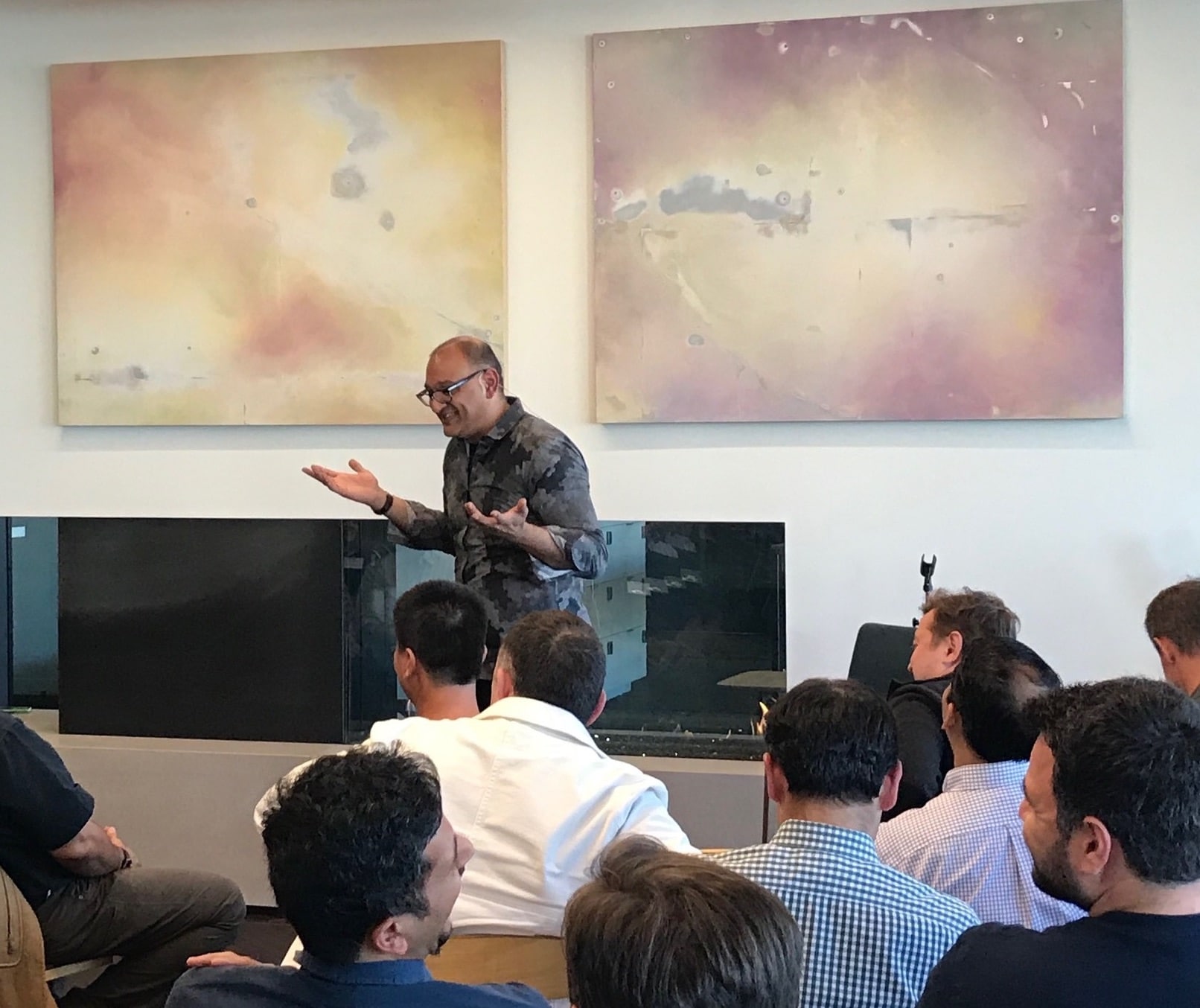As a kid, Jeetu Patel dreamed of traveling the world as a Pan Am employee. His career took a different flight path, however, when he moved to the U.S. from India to attend college at the University of Illinois at Chicago. While in school, he joined a research and advisory firm Doculabs, and after 12 months or so, Patel and a few of his colleagues bought out the original investors.
Seventeen years of consulting later, Patel realized that he wanted a career change. He took a chance and moved to Silicon Valley to join the exciting world of tech and startups. During this time, he held several top roles, including general manager and chief executive of EMC’s Syncplicity business unit, which he grew from zero to $100 million in 2.5 years.
Patel was excited when Box CEO Aaron Levie reached out to him about three years ago with an intriguing request to join him as SVP of Platform and Chief Strategy Officer. Box is an enterprise-level content management platform designed to solve all sorts of challenges, from file sharing and access on a range of devices to data retention. Today, Patel is the CPO, the company has more than 41 million users, and almost 70 percent of Fortune 500 companies depend on Box to manage their content in the cloud. Needless to say, Patel has learned a lot in this role. He recently shared some of his knowledge with us at Norwest’s Enterprise Product Leaders Forum.
Patel presented four of the biggest lessons he has learned from his journey so far:
1. Focus on the hardest problem to solve
As product leaders, the first cardinal rule is to pick the right problem to solve. After all, the problem isn’t going anywhere, but your solution will likely go through many iterations. When you’re deciding which problem to solve, choose the hardest one you can find. It will attract the most talented minds, and it will also have the longest shelf life. (For this reason, in Patel’s experience, the hardest problems have the highest success rate.)
Here’s another rule to internalize:
If you can’t build something that’s 10 times better than what’s already on the market, the chances of customers moving over to your solution are pretty slim.
For instance, if you’re promising a product that’s only 20 percent better, the improvement won’t be enough to overcome the inertia that prevents customers from packing up and moving to a new solution. Remember, every company—including your own—is dealing with finite technical resources, so it doesn’t make sense to go after incremental improvement—dream big or not at all.
2. When growth is the goal, you need to be prepared for it
Box started out as a small company and has now scaled to an organization that employs about 550 people. Some of the most important lessons Patel has learned in this area have come from watching how other companies operate. In 2016, Amazon increased revenue by more than 25 percent while adding an astounding 85,000 employees. Patel and Box have taken a similar approach in how they prioritize organizational structure, by emphasizing small units that operate independently. Box may have more than 500 employees, but the largest teams are rarely made up of more than 10 or 12 individuals.
Box’s organizational units are driven by their PEAPOD notion:
Product Management
Engineering
Analysis
Program Management
Online Growth
Design
Each group is given as much autonomy as possible, with their own metrics and unique missions that they treat as true north. When a group feels as if it’s running a small business within a business, it attracts a certain caliber of people who are looking for autonomy and ownership. In Patel’s experience, these are the types of employees that get things done.
3. Company culture relies on people, not resources
At the end of the day, you can think of your employees as resources, or you can think about them as people. Patel chooses the latter. With this line of thinking, people are recognized for their emotions, ambitions, and motivations.
Consider this point of view: When you want to go out and change the world, you need people behind you—not resources.
It’s worth noting that the more talented your team is, the more new job opportunities will be presented to them. So, what is keeping productive, successful employees from moving on to “greener pastures”? The simple answer is your company’s culture—but how your culture is defined and executed is not something to take lightly. If you want your employees to stick around, you need to treat them like they’re the heart and soul of your company. Because they are.
4. Feedback can hurt, but it’s vital
According to Patel, Box’s team is not always creative about giving people constructive criticism about their work. However, their feedback routine makes it evident who is “winning” and who is “losing”, and peers are never forced to try and correct one another. Box establishes OKRs (objectives and key results) to make it clear that success is not a matter of subjectivity. When an employee is losing, team members want to help him or her course-correct. On the other hand, when a team member is winning, Box’s team wants to help him or her double down on the productive process. Regardless of what metric you identify as KPI, hold employees to it, and don’t let people sandbag performance metrics.
Although Box’s feedback approach rarely beats around the bush, it’s still important to be conscious of your delivery when you’re giving critical feedback. People aren’t offended by facts—they’re offended by tone. Patel says he tends to be direct and had to work on adjusting the tone of his delivery to say what he means without alienating employees. With this in mind, approach the feedback project with the best intentions, and when others misinterpret your feedback (or you misrepresent theirs), make sure to clarify your intentions after the fact.
Overall, Patel strongly believes that people don’t want to be managed. Instead, they want to do impactful work without needing to be told. If you treat employees as capable adults, they’ll almost always act that way.
You’re never done learning
Running a company is an incredible journey, and you’ll learn a lot along the way. You’ll also probably forget a few things and have to learn them more than once. Don’t worry—you’re not the only one, and if Patel’s venture into the tech world is any indication, it is perfectly fine to start on one path in order to find your way to another.
While the above lessons are vital in paving your way into the business world, there are still five ancillary thoughts that startup founders should keep in mind:
- The first one is timing. It’s the most important aspect of a business because you can’t control it. You could have everything else going for you and still fail if the timing is wrong—it’s happened before, and it will happen again.
- The market comes second. It needs to be large, but you should still be able to attack it piece by piece.
- Team comes after market because even the best team can’t make a company work where a market doesn’t exist, but an average team can create a promising startup in ideal market conditions.
- Product is fourth, and it’s the initiation of the value chain. You might not need the best product if you have the above three ingredients, but it sure is more fulfilling when you believe in what you’re selling.
- Finally, brand and distribution round out the process. These are both important, so don’t treat them as afterthoughts.
In reality, you might be able to carve out an existence in the right market if you have your first three ingredients (timing, market, and team) in place. However, the biggest goal for a budding entrepreneur is to bring together all of these ingredients and take Patel’s four biggest lessons to heart. As a result, you’ll have a recipe for a company that isn’t just successful, but one that’s great.


